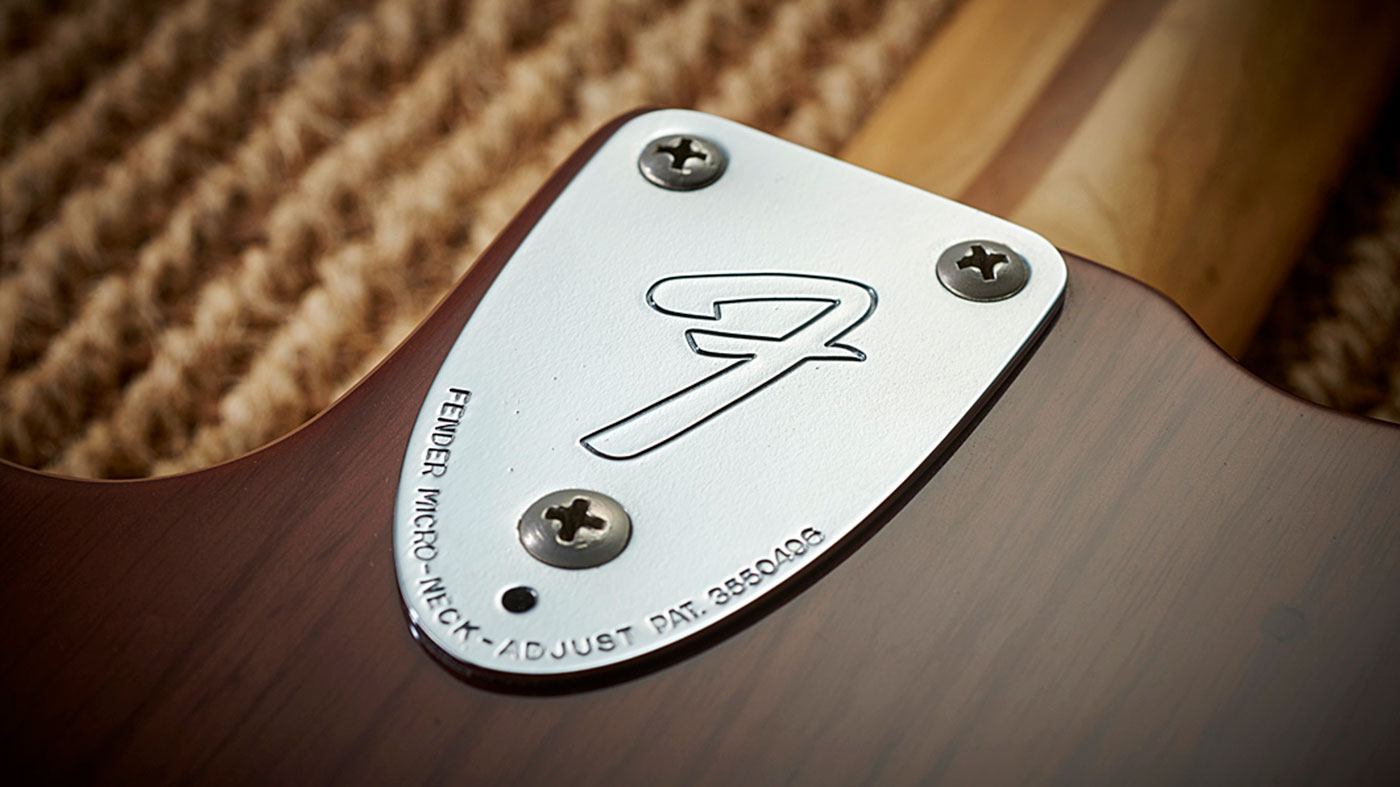Classic gear: Fender Telecaster Deluxe
The history of Fender’s '70s flagship Tele - a melting pot of influences...

ELECTRIC GUITAR WEEK: Having already added to their regular production Telecaster and Esquire models with the single-bound top/back Telecaster Custom and Esquire Custom guitars in 1959, Fender increased their range to include several Tele-style variants by the end of the 60s in response to changing musical tastes and aesthetics.
In 1968 came the f-hole Telecaster Thinline and the ‘flower power’-inspired Paisley Red and Blue Flower Telecasters, while the George Harrison-endorsed Rosewood Telecaster appeared in ’69. With options available for maple or rosewood fingerboards, Bigsby tailpieces and custom colours, the Telecaster was proving to be fertile ground for experimentation.
During the early 70s, with Fender’s owners CBS calling the shots, the tide rapidly began turning for the Telecaster in a current of change that had already swept away the Esquire and Esquire Custom guitars altogether by 1970, with the original Telecaster Custom design and Rosewood Telecaster following suit in 1972.
Electric Guitar Week is brought to you in association with Fender. Check out the Electric Guitar Week hub page for more tips and tutorials.
Fender drafted in the original inventor of Gibson’s famous humbucker, Seth Lover, to create their own version of the ultimate hard rock pickup
With The Beatles’ breakup casting a long shadow, rock music was becoming more and more hard edged as bands such as Led Zeppelin shot to success. Although Jimmy Page used a Telecaster to record a vast majority of Led Zeppelin’s first album, he was more often seen toting a dual humbucker-loaded Les Paul Standard on stage.
Thus, in order to keep up appearances and be seen moving with the times, Fender promptly drafted in the original inventor of Gibson’s famous humbucker, Seth Lover, to create their own version of the ultimate hard rock pickup. Often referred to as the ‘Wide Range’ humbucker, this unique, fully adjustable, high output dual coil design used 12 cunife (CuNiFe – copper/nickel/ iron) alloy magnets and was wound to 10,000 turns with 42-gauge polysol wire, producing a whopping inductance of 4.85H and a DC resistance of 10.6 kilo-ohms.
Revamped with a dual set of Wide Range Humbuckers as from 1971, the Thinline was the first of the bunch to receive the new pickups, followed in 1972 by the drastically overhauled Custom with a humbucker in the neck position (along with a regular Tele bridge pickup). The unprecedented addition to the Tele range, however, came in the form of the Telecaster Deluxe.
Want all the hottest music and gear news, reviews, deals, features and more, direct to your inbox? Sign up here.
Sporting Gibson-style electronics with dual humbuckers featuring individual pickup volume, tone control and a threeway selector switch on the upper bass bout, the very first Telecaster Deluxe off the production line appeared with a December 1972 neck marking and marked the beginning of its era at the top of the Telecaster price list (where it reigned until its discontinuation in 1981) with the statement serial number 000001.
Available in a choice of either Sunburst, Natural, Blond or Black in addition to the standard Walnut finish, this all-star guitar also borrowed some features from the early 70s Stratocaster design, such as a wide headstock, a ‘micro-neck-adjust’ threebolt neckplate system, a ‘belly cut’ back contour and a Strat-style bridge (including an optional synchronised ‘tremolo’ system initially), although jumbo frets and a 9½- inch radius completed its unique feel.
1977 Fender Telecaster Deluxe
1. Serial number
Black decal on headstock matches Fender logo serial number sticker on reverse of scratchplate.
2. Headstock
Bullet truss-rod nut; two butterfly string trees; black and logo; black decals.

3. Plastics
Three-ply scratchplate; four black knobs with metal cap; screw-on white pickup selector switch tip.
4. Hardware
String-through-body chrome ‘hard-tail’ bridge with adjustable saddles; six metal ferrules; Schaller tuners; recessed side input socket; two strap buttons.

5. Pickups
Two Wide Range ’buckers with adjustable polepieces and Fender logo chrome covers; individual pickup tone and volume 1 mega-ohm pots; mylar tone capacitors; three -way selector switch.
6. Body
Three-piece ash single cutaway with curved shoulder joining at 16th fret/no 17th fret ‘notch’; Strat-style ‘belly-cut’ back contour; Walnut polyester finish.
7. Neck
Detachable single-piece fretted rock maple neck with 9½-inch radius and 25½-inch scale length; 21 nickel-silver jumbo frets; threebolt chrome neckplate.

The Evolution of the Fender Telecaster Deluxe
- 1972 First Tele Deluxe (serial number 000001) appears in Walnut with December neck marking
- 1973 Deluxe tops the Telecaster range pricelist at $399.50
- 1975 Synchronised Fender ‘tremolo’ discontinued
- 1976 Fender amp/Gibson-style knobs change to black Strat-style knobs
- Late-1976 Serial number format changes and moves from neck plate to headstock
- 1977 Antigua finish available in regular production
- 1980 Now $750.00, the Telecaster Deluxe still tops the Telecaster range pricelist
- 1981 Discontinued
- 1995 ‘90s Telecaster Deluxe released with 3 single coil pickups
- 2004 ’72 Telecaster Deluxe reissue released
Electric Guitar Week is brought to you in association with Fender. Check out the Electric Guitar Week hub page for more tips and tutorials.

Rod Brakes is a music journalist with an expertise in guitars. Having spent many years at the coalface as a guitar dealer and tech, Rod's more recent work as a writer covering artists, industry pros and gear includes contributions for leading publications and websites such as Guitarist, Total Guitar, Guitar World, Guitar Player and MusicRadar in addition to specialist music books, blogs and social media. He is also a lifelong musician.


